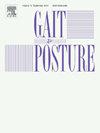Orthotic bracing to treat equinus in children with spastic cerebral palsy: Recorded compliance and impact of wearing time
IF 2.2
3区 医学
Q3 NEUROSCIENCES
引用次数: 0
Abstract
Aim
Spastic cerebral palsy (SCP) often results in "pes equinus," managed with ankle-foot orthoses (AFOs). Yet, little is known about actual wearing time and the minimum duration for improvement. This study explores orthotic compliance, examining its impact on clinical and gait parameters. The hypothesis anticipates a compliance rate below 50 %, suggesting AFOs worn for over 6 hours enhance ankle dorsiflexion.
Method
In a clinically prospective study, SCP children (ages 5 – 15 years) with equinus underwent gait analysis at recruitment and three months later. Wearing time, measured by sensors, categorised participants into compliant (≥6 hours) and non-compliant (<6 hours) groups.
Results
Data were obtained for 32 participants (21 males, 11 females; mean age 10 years 7 months [SD 3 years]). Among 32 participants, 47 % wore AFOs over 6 hours, showing significant ankle dorsiflexion improvement. Thigh shell wearing time was shorter; only two exceeded 6 hours during the day.
Interpretation
Confirming our hypothesis, compliance was < 50 %, yet AFOs over 6 hours improved ankle dorsiflexion. The study revealed minimal AFO daytime use and thigh shell acceptance. Wearing time significantly impacted equinus deformity, underscoring the need to identify factors influencing compliance for effective measures to extend usage.
求助全文
约1分钟内获得全文
求助全文
来源期刊

Gait & posture
医学-神经科学
CiteScore
4.70
自引率
12.50%
发文量
616
审稿时长
6 months
期刊介绍:
Gait & Posture is a vehicle for the publication of up-to-date basic and clinical research on all aspects of locomotion and balance.
The topics covered include: Techniques for the measurement of gait and posture, and the standardization of results presentation; Studies of normal and pathological gait; Treatment of gait and postural abnormalities; Biomechanical and theoretical approaches to gait and posture; Mathematical models of joint and muscle mechanics; Neurological and musculoskeletal function in gait and posture; The evolution of upright posture and bipedal locomotion; Adaptations of carrying loads, walking on uneven surfaces, climbing stairs etc; spinal biomechanics only if they are directly related to gait and/or posture and are of general interest to our readers; The effect of aging and development on gait and posture; Psychological and cultural aspects of gait; Patient education.
 求助内容:
求助内容: 应助结果提醒方式:
应助结果提醒方式:


